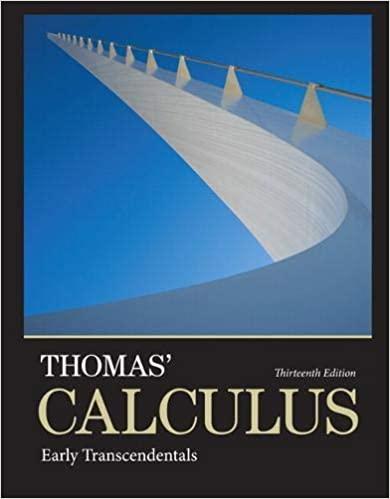A real-valued function is bounded from above on a set D if there exists a number
Question:
A real-valued function ƒ is bounded from above on a set D if there exists a number N such that ƒ(x) ≤ N for all x in D. We call N, when it exists, an upper bound for ƒ on D and say that ƒ is bounded from above by N. In a similar manner, we say that ƒ is bounded from below on D if there exists a number M such that ƒ(x) ≤ M for all x in D. We call M, when it exists, a lower bound for ƒ on D and say that ƒ is bounded from below by M. We say that ƒ is bounded on D if it is bounded from both above and below.
a. Show that ƒ is bounded on D if and only if there exists a number B such that | ƒ(x)| ≤ B for all x in D.
b. Suppose that ƒ is bounded from above by N. Show that if limx→c ƒ(x) = L, then L ≤ N.
c. Suppose that ƒ is bounded from below by M. Show that if limx→c ƒ(x) = L, then L ≥ M.
Step by Step Answer:

Thomas Calculus Early Transcendentals
ISBN: 9780321884077
13th Edition
Authors: Joel R Hass, Christopher E Heil, Maurice D Weir





